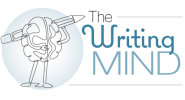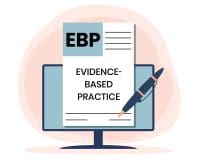It can be hard for new (and even experienced) writers to narrow a topic for an article from a broad focus down to a narrow one. You may have a great idea, such as writing about central venous catheters, but realize that’s too wide a topic for the typical journal article. I’ve written about strategies for narrowing the topic; here I want to share a tool to help verify that you’ve focused your topic, serve as a guide as you write, and save you time.
Summing up
A summary statement is what it sounds like: it sums up your article. It consists of a single sentence that includes the purpose and target audience for the article. Here are two examples:
- This article explains the complications of central venous catheters (CVC) and how staff nurses can prevent them.
- This article describes an innovative program that faculty can use for teaching students critical thinking skills.
As these examples indicate, summary statements are appropriate for all types of articles, including clinical, research, and quality improvement.
So what?
After you write your summary statement, take it for a test drive. The test drive consists of asking an important question: “So what?” Or stated another way, “Why should I care about this topic?”
Potential readers for your article are likely very busy people. They’ll quickly scan the title of the article and, if you’re lucky, the abstract or first few paragraphs, then make a quick decision as to whether reading the full article is worth their time. You can push that decision in favor of your article by ensuring your topic resonates with those potential readers. Making a topic resonate depends on presenting information that readers can apply in their practice setting or makes them think or feel something important. For example, they might realize that learning about CVC complications will help them better care for patients. Or they might realize that they need to think more about their own attitudes when caring for transgender patients.
In essence, you want an affirmative response to the question, “Does this topic matter to me?”
Share your summary statement with representatives of your target readership to obtain feedback. For example, if you’re writing about wound care debridement for home care nurses, seek out a home care nurse, not a medical/surgical nurse. It also may be helpful to share your summary statement with an expert in the field to ensure you aren’t missing an important aspect of a topic.
Refine your statement as needed, based on your feedback. For example, your original statement might have been:
- This article discusses the use of oral anticoagulants.
Based on feedback, you strengthen the statement to:
- This article provides staff nurses with an overview of three new oral anticoagulants.
Adding detail to your summary statement can make it easier to outline your article, the next step in the writing process. For example, you might revise the previous statement further:
- This article provides staff nurses with an overview of three new oral anticoagulants, including pharmacokinetics, indications, dosage, adverse effects, contraindications, and patient education.
A guide
Once you have your final summary statement, you’re prepared to start writing the outline. You’ll find that the statement helps you outline your article more quickly.
After completing the outline, you’re ready to start writing the article. One caution: Don’t put the summary statement in the article exactly as is. Sentences that start with phrases such as “This article reviews…” or “This article discusses…” sound more like a school paper than a published article. However, you want to include the essence of the article early so that readers know what’s planned for them.
To ensure you stay on topic, refer to the summary statement (and your outline) at frequent intervals as you write. It can be easy to go down a rabbit hole when you find something interesting, but you must stay focused. For example, if you’re writing an article about CVC complications related to insertion, you don’t want to veer off into ongoing maintenance complications. Staying focused not only results in a better article, it also saves you time by helping you avoid extraneous material that has to be cut when you revise your first draft.
A simple, powerful tool
A summary statement is a simple, yet powerful tool for ensuring that you’re on target with your topic and the direction of your article. Taking time to write—and test—a summary statement up front will enable you to write a more effective article and save you valuable time.


I’ve been a full-time professional nurse writer and editor for many years, and that doesn’t count the writing I did as I fulfilled my nursing roles in clinical, research, education, and management. My passion is helping nurses share their expertise through the written word, including, but not limited to, publication. Writing can be scary and intimidating. I hope to make it less so and to help you develop your writing skills the same way you’ve developed your nursing skills.
Whether you’re considering your first or your 50th publication, want to contribute to your organization’s newsletter, or crave to be a better communicator online and in print, I hope you’ll find what I write helpful. The nurse publishing colleagues I’ve learned from over the years (many of whom are contributors to my book) may not be listed by name, but I’m grateful for their willingness to share. In that spirit, I’m looking forward to sharing with you! If you have feedback, feel free to email me at csaver57@gmail.com.
Reference
Schull PD, Saver C . Finding, refining, and defining a topic. In: Saver C. Anatomy of Writing for Publication for Nurses. 4th ed. Indianapolis, IN: Sigma Theta Tau International; 2021;21-30.




















1 Comment. Leave new
Great tips — thanks Cindy!!